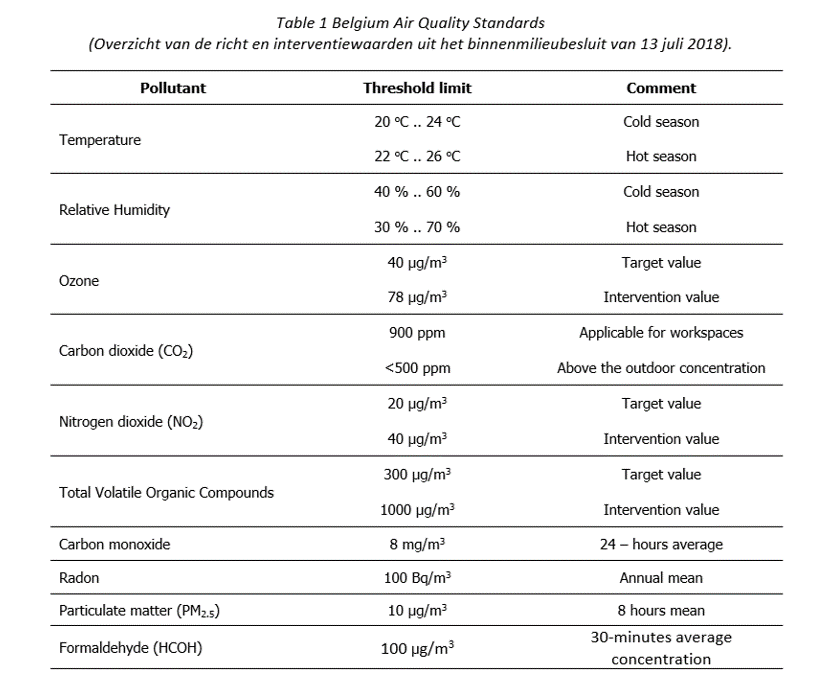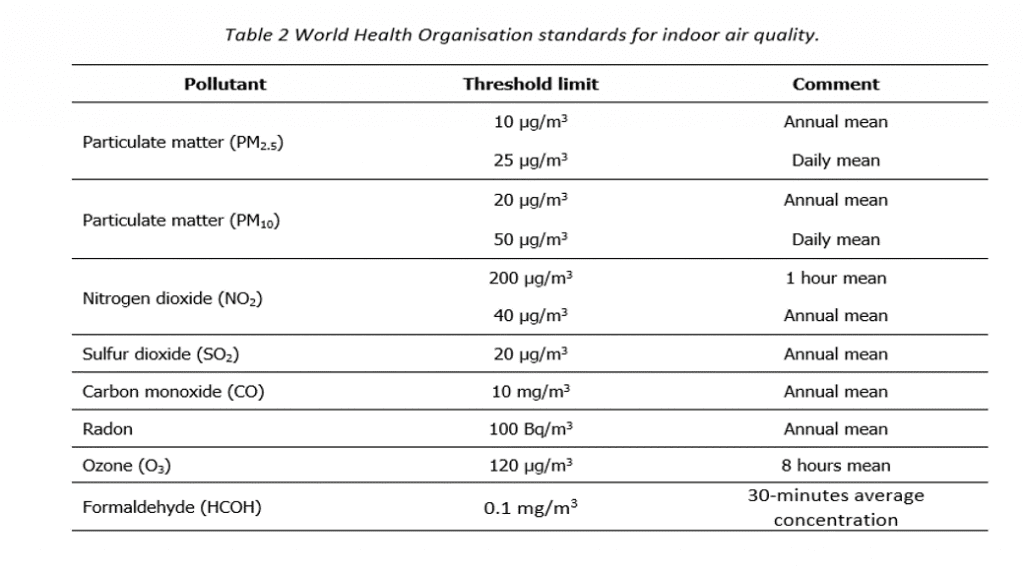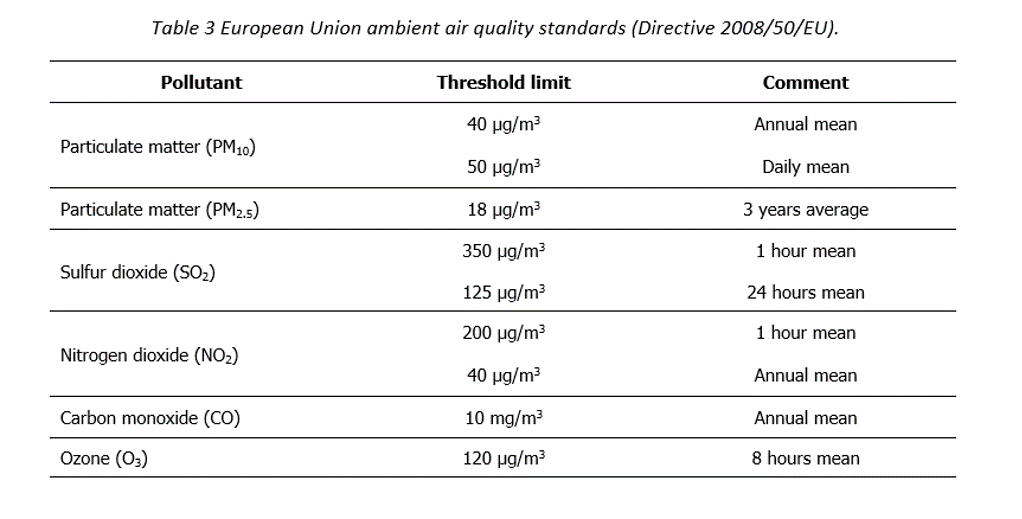Air quality standards
Fresh air is a fundamental requirement of life. The indoor air conditions in workplaces, educational centres, hospitals, public buildings, cities and urbanisations where people spend a large part of their life is an essential determinant of healthy life and people’s well-being. Hazardous substances emitted from building materials, transport, industrial zones and indoor equipment and furniture or due to human activities indoors, such as combustion of fuels for cooking or heating, lead to a broad range of health problems and may even be fatal. Therefore, local and international authorities are continuously working on the development and update of indoor and outdoor air quality standards for better health and well-being.
Belgium Air Quality Standards
Belgium air quality standards were described in “Besluit van de Vlaamse Regering houdende maatregelen tot bestrijding van de gezondheidsrisico’s door verontreiniging van het binnenmilieu” in June 2004, the same document was revised and updated by Vlaamse Regering on 13 of july 2018. The directive includes limits for inorganic and organic pollutants, recommendations for comfort parameters as well as standards for biological contaminants (mould and yeast). The overview of the most common air pollutants and parameters is given in table 1. Moreover, the table includes both the actual threshold limit and desired target values to be achieved in the coming years.

World Health Organisation Standards For Indoor Air Quality
World health organisation standards and threshold limits for indoor air quality described in multiple books: “WHO guidelines for indoor air quality: selected pollutants”, “Guidelines for indoor air quality – household fuel combustion ”. The overview of WHO indoor air quality limits are given in table 2.

European Commission Standards For Outdoor Air Quality
The European Commission is actively working on ambient air quality monitoring and emissions reduction. For instance, Directive 2008/50/EC introduced additional PM2.5 objectives targeting minimisation of exposure to fine particles. These objectives were entered into force in 2020 with the maximum ambient PM2.5 concentration of 18 µg/m3 (3 years average). The overview of the most common air pollutants limits is given in table 3

Learned something? Feel free to share.

Ozone Levels In Brussels For The Last 10 Years
Did you know that the very air we breathe can be both a shield and a hazard? While ozone high up in the atmosphere protects us from the sun’s harmful rays, ground-level ozone can pose serious health risks. Airscan’s latest decade-long study reveals alarming trends in ozone levels across Brussels, with certain summer days seeing concentrations double the WHO’s recommended limit. Dive into our findings to understand how ozone impacts your environment and discover practical tips to protect yourself during high-pollution days..

Pure Cities: how temperature, wind and rain shape our air
This article explores the seasonal variations in air pollution and the influence of meteorological factors on pollutant concentrations, focusing on data from the “Pure Cities” project in Belgium. Analyzing pollutants like PM2.5, PM10, and NO2, the study highlights how temperature, humidity, wind speed, atmospheric pressure, and precipitation affect air quality throughout the year. Findings show that pollutant levels tend to rise during colder months due to increased residential heating and reduced dispersion. The article discusses the importance of addressing seasonal pollution through targeted strategies, such as enhancing public transport, promoting green spaces, and aligning regulations with WHO guidelines.

Beats for Planet: Key Findings of 3 Years of Air Quality Monitoring in Belgian Schools
3 Years of Beats for Planet: this is what we know about air quality in Belgian schools! If you have been following Airscan for a while, you will definitely know Beats for Planet. Airscan launched this project with Belfius three years ago with the aim of helping schools improve their air quality. In the framework of this project, Airscan has collected and analyzed data from 72 schools around Belgium for three indoor pollutants: carbon dioxide (CO2), particulate matter (PM) and volatile organic compounds (VOC). This is what we found..





